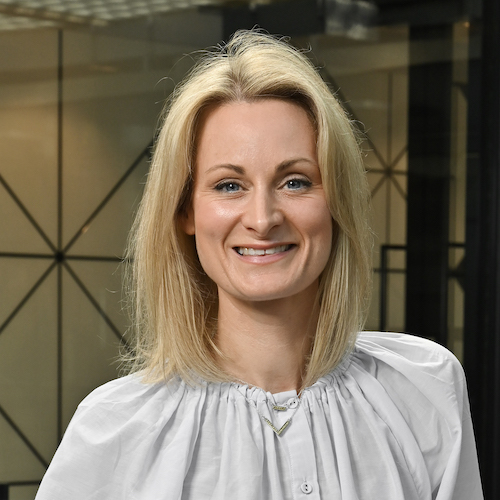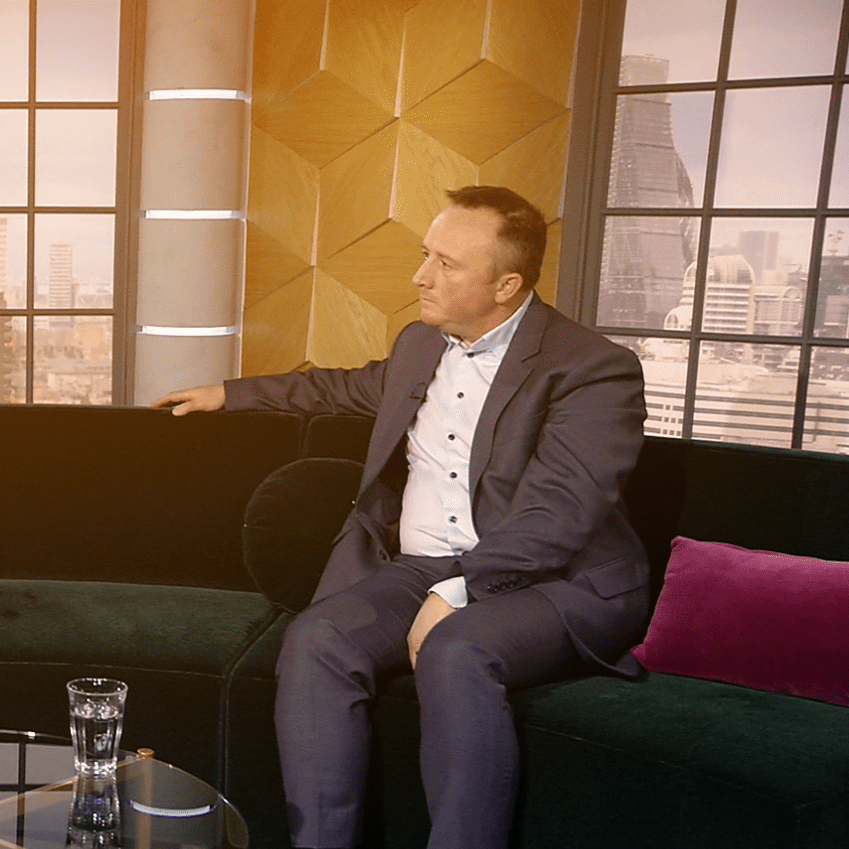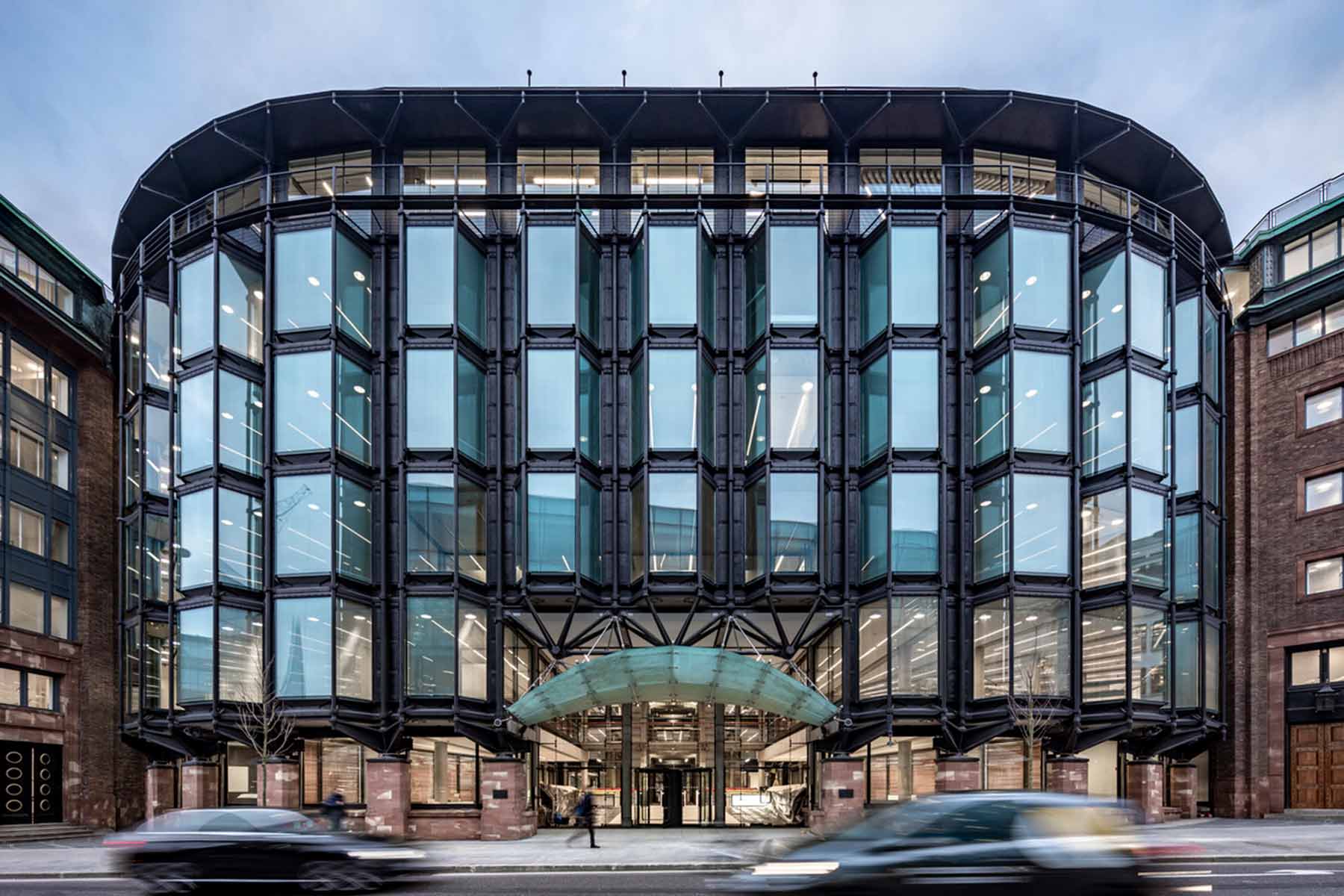Steal the show: How thought leadership creates buzz at industry events
Emily Taylor Gregory
In-person corporate events are back, and using them to launch fresh insights that get people talking about your company is a great way to put your brand back in the spotlight.
Here, FT Longitude’s marketing director Emily Taylor Gregory and group editor Joe Dalton tell us how brands can use thought leadership to attract attention on the global stage.
Why does thought leadership get you noticed at industry events?
Emily: It can feel counterintuitive to launch your latest campaign at one of the largest gatherings in your sector, because there’s so much noise around major events that it’s a struggle just to be heard. But there’s a big benefit – and it’s hard to get elsewhere: you have a captive audience. Your potential buyers are there and ready to talk, the media turn out en masse to hear what the experts have to say, and conference delegates are there to learn and make connections.
Most events pride themselves on a curated programme of content that tells audiences about the latest thinking on important topics. You might plan to pitch for a speaking slot on the main stage or buy into a pay-to-play seminar that runs in parallel, but either way if your thought leadership comes out of timely research into a topic that aligns with the big themes of the day, you will be in high demand.
But make sure you pitch your ideas in the right way. Be clear about why your insight is relevant, what audiences will get out of it and who your thought leaders are – especially if you can bring in an external perspective, and even better if it’s a name that carries weight.
What type of thought leadership insights cut through to event organisers and the media?
Joe: Surveys are a great way to win attention from audiences universally. The media love using a datapoint to tell a story – especially if it gives a new perspective on a familiar topic – and business leaders respond well to evidence-based insight, especially when it relates to the views of their peers. Similarly, event organisers are often on the lookout for new data from trusted sources around trends that relate to the hot topics of the day.
It’s also important to know what your competitors are doing. Do they have a regular insights programme and often produce research of their own? If so, think about what you can do differently. For example, research that allows you to produce an index – which ranks various items by pitting country versus country, city against city, or industry competitors against one another – is both useful and likely to produce attention-grabbing headlines.
Don’t lose sight of your objectives when you plan your research. For example, indexes and rankings don’t just appeal to the media – they also work really well in conversations with clients and prospects. Several of the companies we work with take advantage of this at events to better understand how their customers operate, what their challenges are, and where they see opportunities for improvement. If client engagement is your main purpose, then think about how your client-facing teams can use your thought leadership to share intelligence and create discussion.
It also helps to present a provocative or counterintuitive angle or opinion. All too often, companies are scared to express a strong point of view in their thought leadership. But if they don’t take a firm stance on a topic, they will find their ideas don’t get any interest.
How important is the ‘global versus local’ debate here?
Joe: For most of the companies we work with, the events they attend attract a global audience – and more so now that a hybrid format is the norm. So ensuring that your research gathers insight from a global cohort should give it mass appeal. But we also recommend research studies that explore regional perspectives too, because this means you can extend the life of the campaign with local markets and activation strategies.
This is where centralising your thought leadership and research programmes is so important. Speaking with one voice creates a powerful cumulative impression. And when you do give some freedom to local markets, it will be a lot easier to be coherent and relevant if you get the right people involved from the very beginning and produce fewer outputs but make them work harder.
Are there any other opportunities to amplify thought leadership at these events?
Emily: A multichannel approach to amplification is really important with any campaign, but it’s particularly crucial in this type of environment where the potential audience reach is so vast. Think about what stage your audiences are at in terms of awareness and engagement, and look for opportunities to connect with them at a time and place that suits them.
For existing customers, for example, you could invite them to an exclusive event at the conference – a seminar, workshop or roundtable. Or if you are exhibiting you could invite them on to your stand for a customised view of the insights.
But for those who don’t yet know you, look for peripheral opportunities to reach them. Does the event have a strong social presence you can piggyback on? Does it have a conference programme or daily news bulletin to which you could submit a bylined article about the research? Or perhaps another organisation is hosting an event and you could partner with them to extend your reach?
Which are the best ways to measure success?
Emily: Marketers have become more and more reliant on engagement metrics to measure success. Web traffic, click-throughs, shares and downloads are useful to a certain extent, but they don’t tell you much about a content campaign or a brand’s wider impact – particularly at an event, where a lot of the activity is likely to be offline.
For example, if your main thought leadership goals are lead generation and client conversations, can you track visitors to and number of meetings on the stand? Can you report whether these were new or follow-up conversations? And did an opportunity come out of that meeting?
Combining quantitative measurements with qualitative feedback – from your team as well as your customers – can give you much deeper insight into what worked well and what you might want to do differently next time.
So B2B events are back in business. Do you plan to use one to launch your next campaign?
Speak to the team
We’ll help you to navigate and overcome any challenges you currently face and learn how to get more out of your content.
Book a meeting
About the author: Emily Taylor Gregory
Emily is our marketing director, responsible for the brand, marketing and communications strategies for FT Longitude. Emily leads our content and events programmes, as well as our speaking engagements and PR activity, working closely with our editorial and research teams to develop and promote insight and best practice at the cutting edge of thought leadership.
Before joining FT Longitude, Emily spent 14 years working in various marketing roles in the publishing and technology sectors.
 |
Tel:
+44 (0)20 7873 4770
|
Tel:
+44 (0)20 7873 4770


